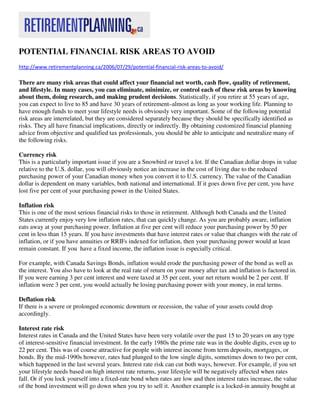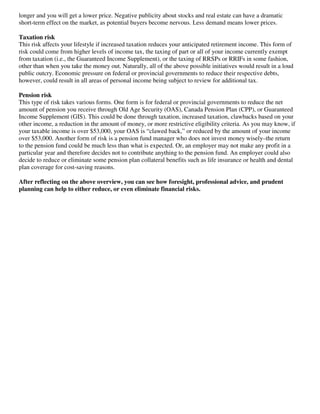There are many potential financial risks that could affect one's retirement, including currency risk if traveling abroad, inflation risk which erodes purchasing power over time, and deflation or recession risk that could decrease asset values. Other risks include interest rate volatility, changes to government policies, default on repayment of investments, being at the wrong point in market cycles, economic downturns, lack of diversification, illiquidity of assets, increased taxation, and reductions to pension benefits. Seeking professional financial planning advice can help anticipate these risks and develop strategies to mitigate their impact.


